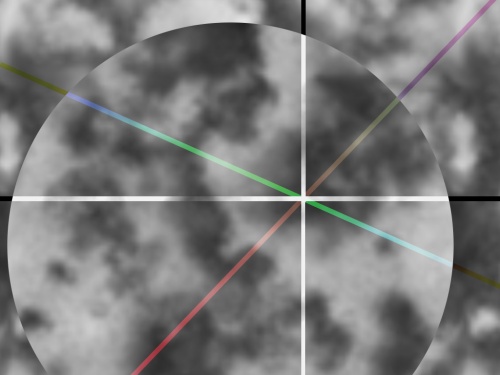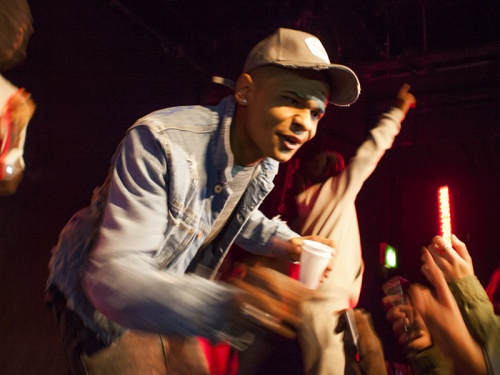Liquidity: Art and Capital
Ahead of our symposium on 9 December, Andrew Conio has written this fascinating piece, exploring the ways in which art responds to and forms part of, today's flows of capital.
Money dominates nearly all that we do; our ontological horizons and our notions of trust, relation, governance, sociality, production and jurisprudence are subsumbed by the financial nexus. The vast majority of economic theories take money as a simple given. Yet money is barely understood. The question of what it actually is has baffled the greatest minds. From Aristotle to Marx, Nietzsche to Deleuze, Adam Smith to Derrida, Simmel to Minsky, across anthropology, philosophy, psychoanalysis, political economy and the whole panoply of post-structuralist thought, a reliable definition of money is yet to be found.
Competing claims offer money as gift and weapon, a social value, a symbol of free will, a commodity fetish, a unit of exchange, a claim upon society… … …
Life flows. Societies, economies, and political systems channel flows to produce things, functional processes and systems. Processes congeal to make autopoietic and highly relational social structures. The language of painting or music can be used to describe social processes because society is a mobile composition of points, lines and rhythms. Out of flows, through densities, contractions, planes and surfaces, compositions emerge.
Capitalism is less concerned with extraction and surplus than it is with the control of flows. Particularly the flow of money: where it stops and where can it travel unimpeded to merge with other flows, where it can diverge to create new tributaries, where it is blocked or, indeed, where it is used as a 'weapon of mass destruction’. The flow of money transcends the nation state. Yet recently nation states conjured, as if by magic, trillions of pounds to sustain the flows of money and to keep control of that flow in the hands of the financiers to whom states have surrendered the right to create money. When the shadow banking sector has a notional value of $1.2 quadrillion, it is possible to say that money creation has become infinite.
What, then, is the relationship between this infinite money and the actual pound in your pocket that buys real items in a shop? What is the relationship between credit money—which now has the characteristics of rent and tribute, belonging to the despot—and the measurable, accountable money on a balance sheet of a company or a government? How, above all, do we account for the fact that money is enabling, productive and able to create the greatest of freedoms, while its creation and governance is utterly irrational and destructive of many of life’s highest values?
Artists directly or indirectly, obliquely or rhetorically, have dealt with the relationship between the flows of money and life for centuries. Immaterial labour, non-production, alternative materialities, utopias and experiments with excess are recent well-known practices, as are attempts to work with the gift economy or create alternative economies or communities. Recently, artists have used digital media and new algorithms to understand, critique and challenge preconceptions about money. Flows of water, capital and desire are the central themes of Hito Steyerl’s film Liquidity, recently shown at the ICA, which captures the movements of weather systems, financial systems, affect and the projections and identification of a central character as he finds it impossible to find stability among the storms of the 2008 financial crash.
The Liquidity Symposium creates an interdisciplinary exchange between a philosopher, financial analyst, activist/writer, geographer, psychoanalyst and artists and filmmakers not to provide an answer but to test various accounts against one another, so that differences can emerge and dichotomies can be clarified.
This is not least because once, after the excitement around Paris May 1968, a new theoretical term emerged around the work of Felix Guattarri and Gilles Deleuze: schizoanalysis [PDF]. They and others claimed that the release of the schizo presented an irrepressible force of decoding and deterritorialisation - both the driving force of capitalism and its revolutionary overcoming. Now, the schizoanalytic subject is the subject of capital; the nomad is commodified and the rhizomatic subject is little more than absentmindedly in thrall to capitalism’s paranoid/schizoid oscillations. Are artists therefore charged with finding new forms of critique necessitated by a new world of financialisation, when we have reached exactly what Marx predicted in The Communist Manifesto?
"The bourgeoisie, wherever it has got the upper hand, has put an end to all feudal, patriarchal, idyllic relations. It has pitilessly torn asunder the motley feudal ties that bound man to his “natural superiors”, and has left remaining no other nexus between man and man than naked self-interest, than callous “cash payment”. It has drowned the most heavenly ecstasies of religious fervour, of chivalrous enthusiasm, of philistine sentimentalism, in the icy water of egotistical calculation. It has resolved personal worth into exchange value, and in place of the numberless indefeasible chartered freedoms, has set up that single, unconscionable freedom — Free Trade. In one word, for exploitation, veiled by religious and political illusions, it has substituted naked, shameless, direct, brutal exploitation."
In a lecture series at Goldsmiths, Michel Feher speaks of taking control of capital for the social good. This chimes with Michael Hardt and Antonio Negri’s argument in Commonwealth (2009) that money and finance should be opened up to the multitude and diffuse forms of political agency. Capital issued differently—controlled differently—could be used for the social good instead of for worldwide immiseration and climate-destroying production. Abstract capital is fashioned as an instrument of freedom, a new commons!
What then of the artists’ response to this? Financial markets are fictive (a derivatives market with a notional value of £1.2 quadrillion), money is conjured out of thin air. Markets are no longer based on expropriation of surplus value (although this is very real to the workers whose labour is exploited) but on asset inflation through speculation on voodoo products. Are artists attempting to take back control of this imagined, groundless space?
Matthew Noel-Tod and Ben Seymour’s Can Dialectics Break Gravity? is a Situationist hijacking of Alfonso Cuarón’s (2013) Gravity which, by reversing the film, reverses Man’s launch into space, recoding and finally re-territorializing the astronauts (only for them to take off again) in an potential endless cycle of decay and entropy, creation and destruction.
Cast out into a world of non-existent value, only a hurricane can bring them back down to a ruined earth where they can emerge amoeba-like to start all over again. Can Dialectics Break Gravity intensifies the original message of the film where astronauts and their flimsy rockets are torn apart by the rampaging derivative products. Man’s greatest endeavors (to conquer space) are minuscule compared to the tempest caused by out of control financial products. The astronaut attempts to find safe havens in American, Russian and finally Chinese space stations until they too are ripped apart and the relationship between nation states and the financial markets is rendered.
In A Season in Hell 3D, the Latin palindrome, In girum imus nocte et consumimur igni (we go in circles into the night, we are consumed by fire) encircles the globe. It is a metaphor for the destructive halo of products that encircles and dwarfs our material, spiritual and psychic worlds. Yet, typically for Mathew Noel Todd, the flames are populated by cartoon characters, infantilizing and undermining the adult world and its conceits, and our fears; the immaterial, virtual and speculative is as liable to transformation as a 3D model, a new algorithm or a range of new characters.
In the symposium, we will see Hilary Koob Sassen’s astonishing film which unleashes lines of flight where psychic, representational and abstract investments are repurposed, created and undone.
Is the new speculative space opened up by capitalism already populated by artists? Is this space being treated by artists as a new commons, to be critiqued, undone and reimagined? ■
Symposium: Liquidity takes place on 9 December.
Andrew Conio is Director of Fine Art in the School of Music and Fine Art, University of Kent.
This article is posted in: Articles, Blog, Events
Tagged with: Liquidity, symposium, Symposia, learning, Captialism, Money, Capital, Art, Artists, Gilles Deleuze, Felix Guattari, Karl Marx, Communism, The Communist Manifesto, University of Kent, Michael Feher








